| Japanese | English |
| Date | 30 Oct. 2002 |
| OS | Windows2000 Professional |
| Measurement software | DSSF3 |
| Measurement hardware | Speaker: Omni-directional speaker, KENWOOD OMNI 5 Microphone: SONY ECM999 Microphone amplifier: DAT TASCAM DA-P1 Notebook PC (signal generator) : SONY VAIO PCG-R505R Notebook PC (analyzer) : DELL INSPIRON7500 |
The calibrated microphone ECM999 (see the last report) is used to measure the frequency response of a speaker. Two computers are used: one (SONY VAIO) is for the signal generator and another (DELL INSPIRON) is for the FFT analyzer of RA.
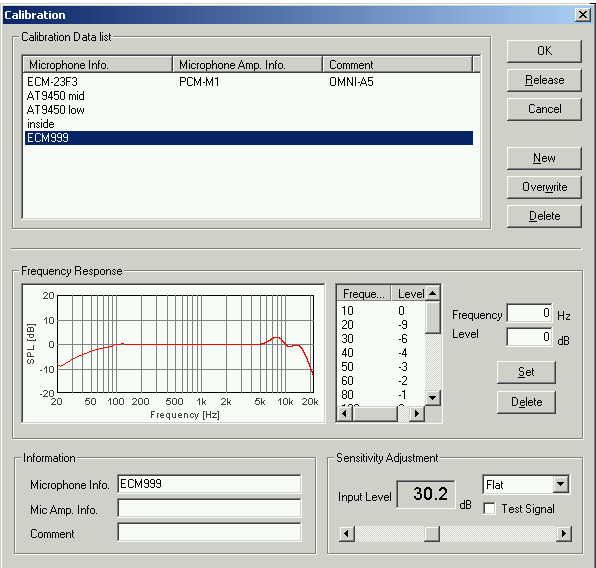
In measuring the performance of the sound equipments, it is general to use a 1 kHz sinusoidal tone as a test signal. The sinusoidal tone is the simplest signal. So it can be influenced by the performance of the equipment most sensitively. Unwanted phenomena, such as distortion, attenuation, or pitch error, are easily detected. Check of the accuracy of the output signal is the basic principle of sound measurement.
In VAIO's signal generator, 1 kHz tone is generated.
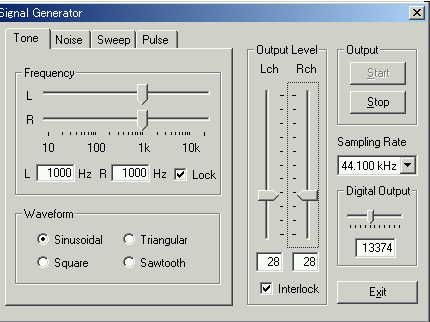
This is a level meter in VAIO. Because the input device is set to WAVE, the input signal here is taken from the output of the mixer of VAIO.

This is a monitored waveform by the oscilloscope in VAIO. The test signal is then outputted from the mixer to the amplified speaker (OMNI5) via the headphone output terminal.
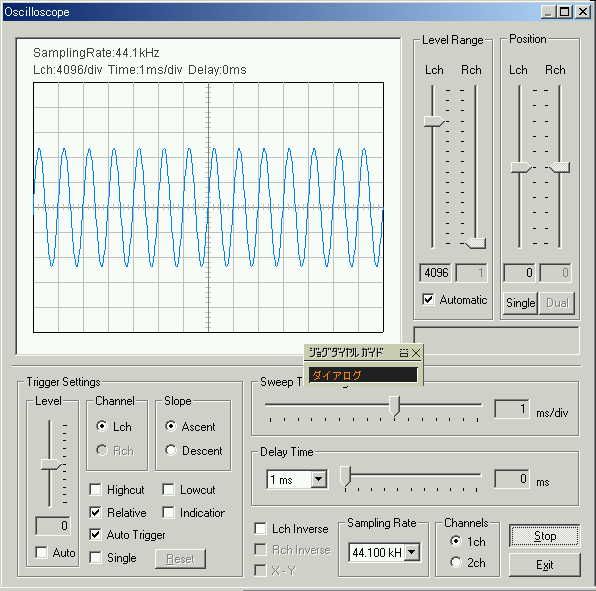
This is a waveform monitored by the oscilloscope in INSPIRON. In the input side, the signal is inputted from the microphone (SONY ECM999) to the Line- in terminal of INSPIRON via the microphone amplifier (DAT recorder). Comparing the waveforms, no distortion is observed.
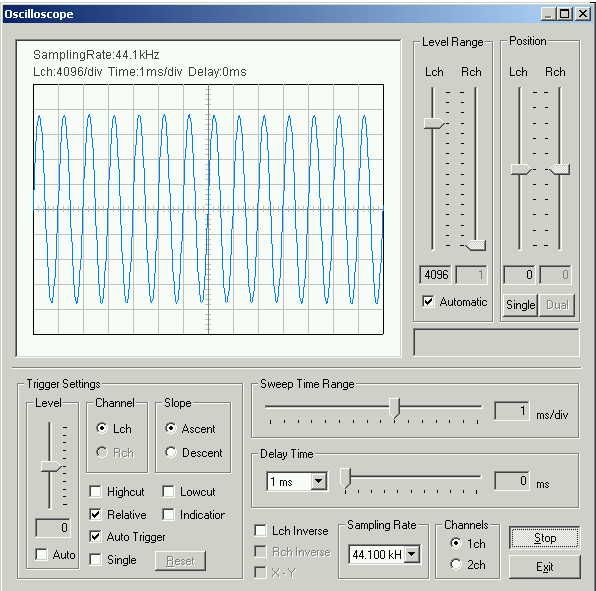
This is a power spectrum measured by the RA in INSPIRON.
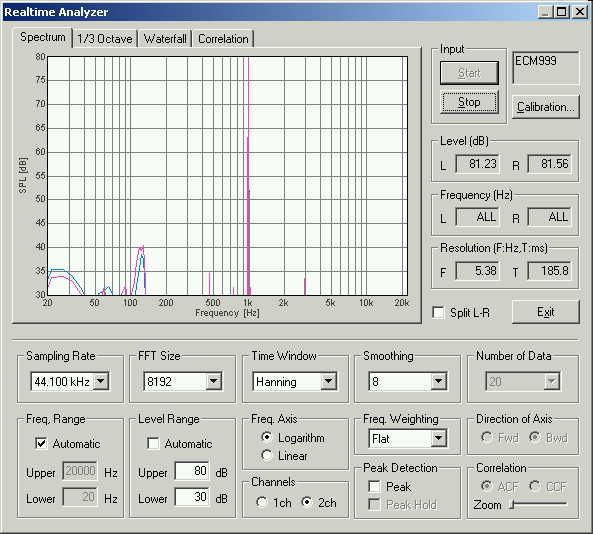
Then, the square wave is generated in VAIO.
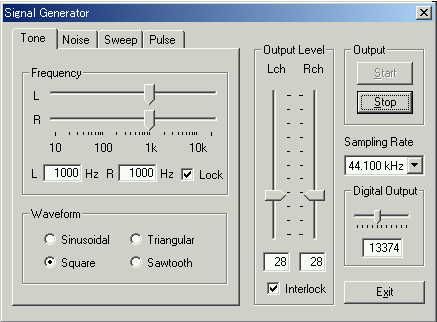
This is a waveform monitored in VAIO.
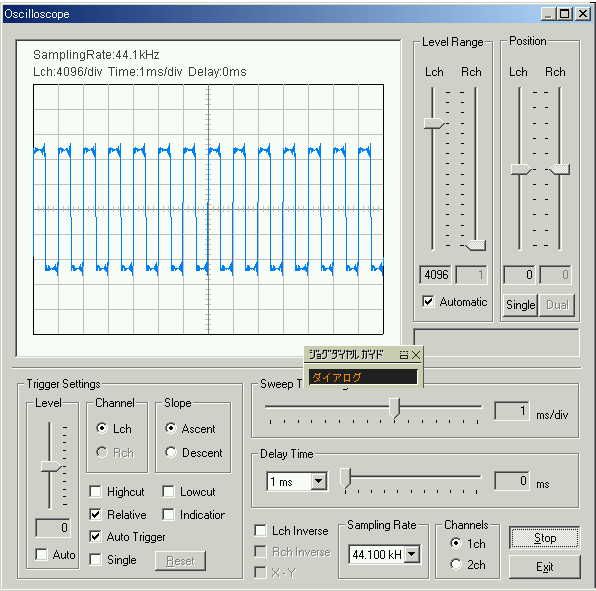
This is a waveform monitored in INSPIRON. Now, the waveform is distorted.
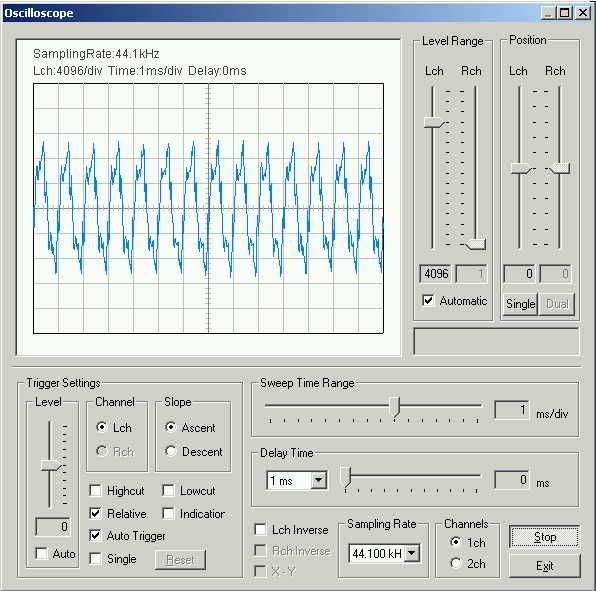
This is a power spectrum of the square wave in INSPIRON. It is clear that the high frequency range is greatly polluted by noise.
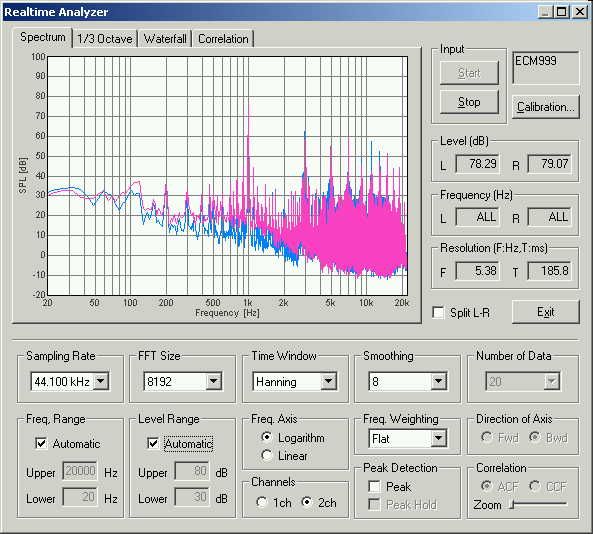
This is the spectrum of a background noise.
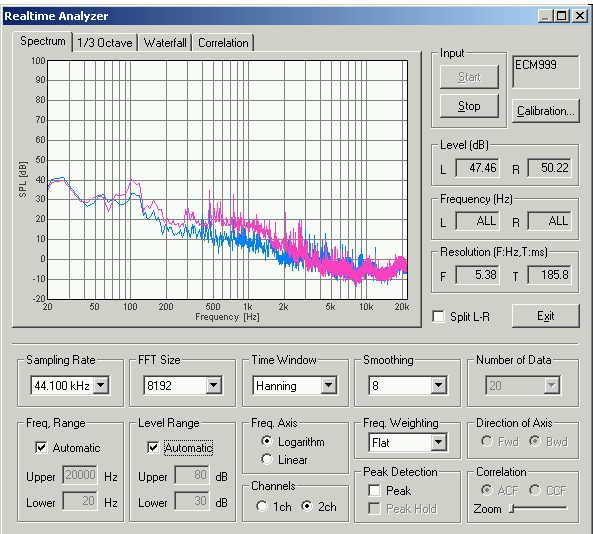
It is difficult to operate the signal generator one by one to check the all frequency range. So, pink noise is used as a test signal to measure the frequency response of the loudspeaker. The proper test signal of the speaker check in the 1/3 octave analyzer (real time analyzer) is pink noise. Since the white noise supplies excessive power in high frequency, it may damage a driver. (Don Davis, "Sound system engineering")
If the 1/3 octave analysis shows the flat response for the pink noise, it is said that the equipment tested has the good frequency response. The latest high-end audio speaker manufacturers pay more attention to the time response characteristic than to the frequency response. But the frequency response is still important.
The figure below shows the frequency response of KENWOOD OMNI 5. Although it covers the audible frequency range, the low and high range are decreased.
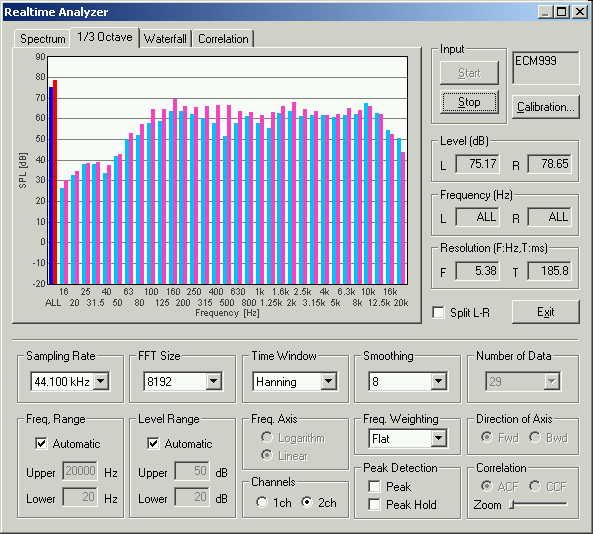
In the frequency characteristic (1/3 octave) shown above, the characteristic of the VAIO's amplifier and a background noise are also reflected. But it seems that the effect of the amplifier is small because its performance is better than a speaker. In respect of the influence of the room, anechoic room is ideal for the measurement.
Sin-sweep is generated between 20 and 20000 Hz with a rate of 1.8 octave/s.
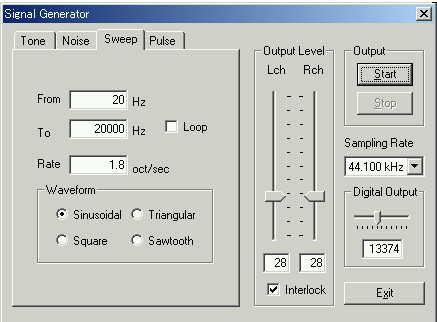
The 3D display using the sweep signal is the best way to test a speaker. It is said that this measurement reveals many important properties of speaker, such as the performance of the crossover network, and the time response to the frequency variation. (Don Davis, "Sound system engineering")
This is a 3D display of a spectrum. As time progresses, it moves from this side.
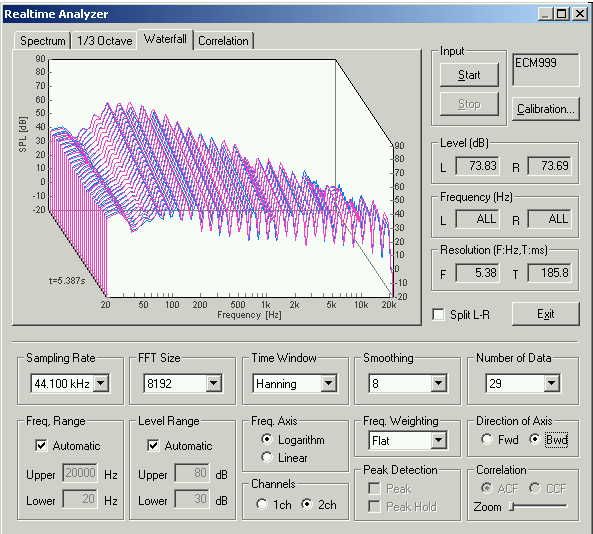
The direction of time was reversed.
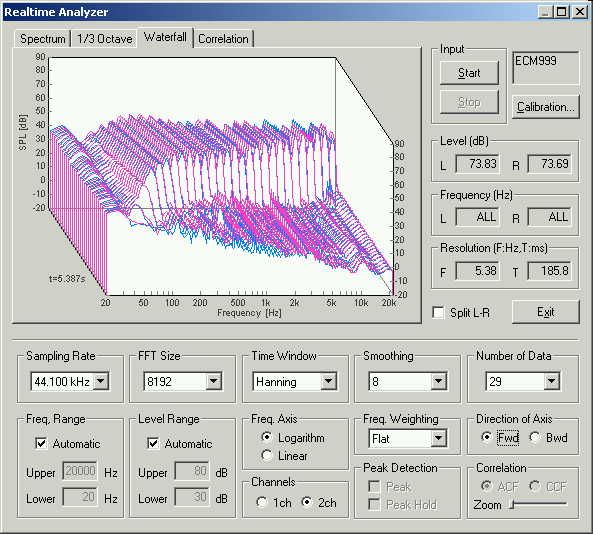
This is a spectrum measured with a white noise. It shows a frequency characteristic of a speaker.
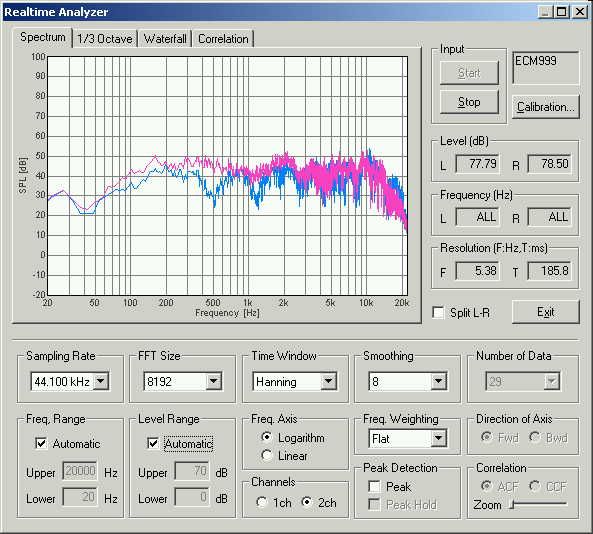
The vertical axis was zoomed in. Change of the sound pressure level to frequency became intelligible.
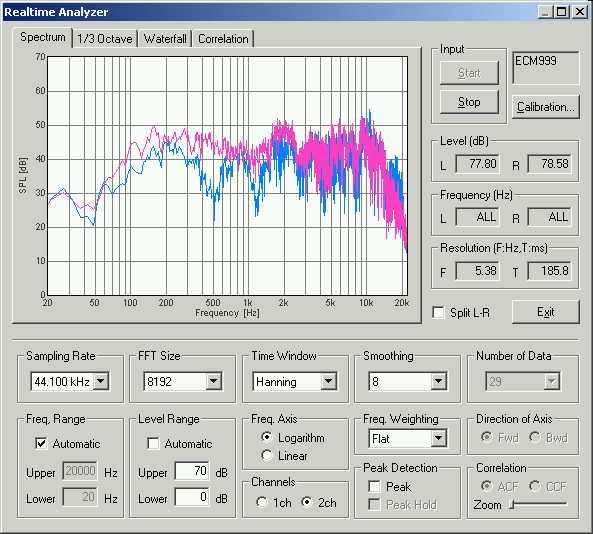
April 2003 by Masatsugu Sakurai